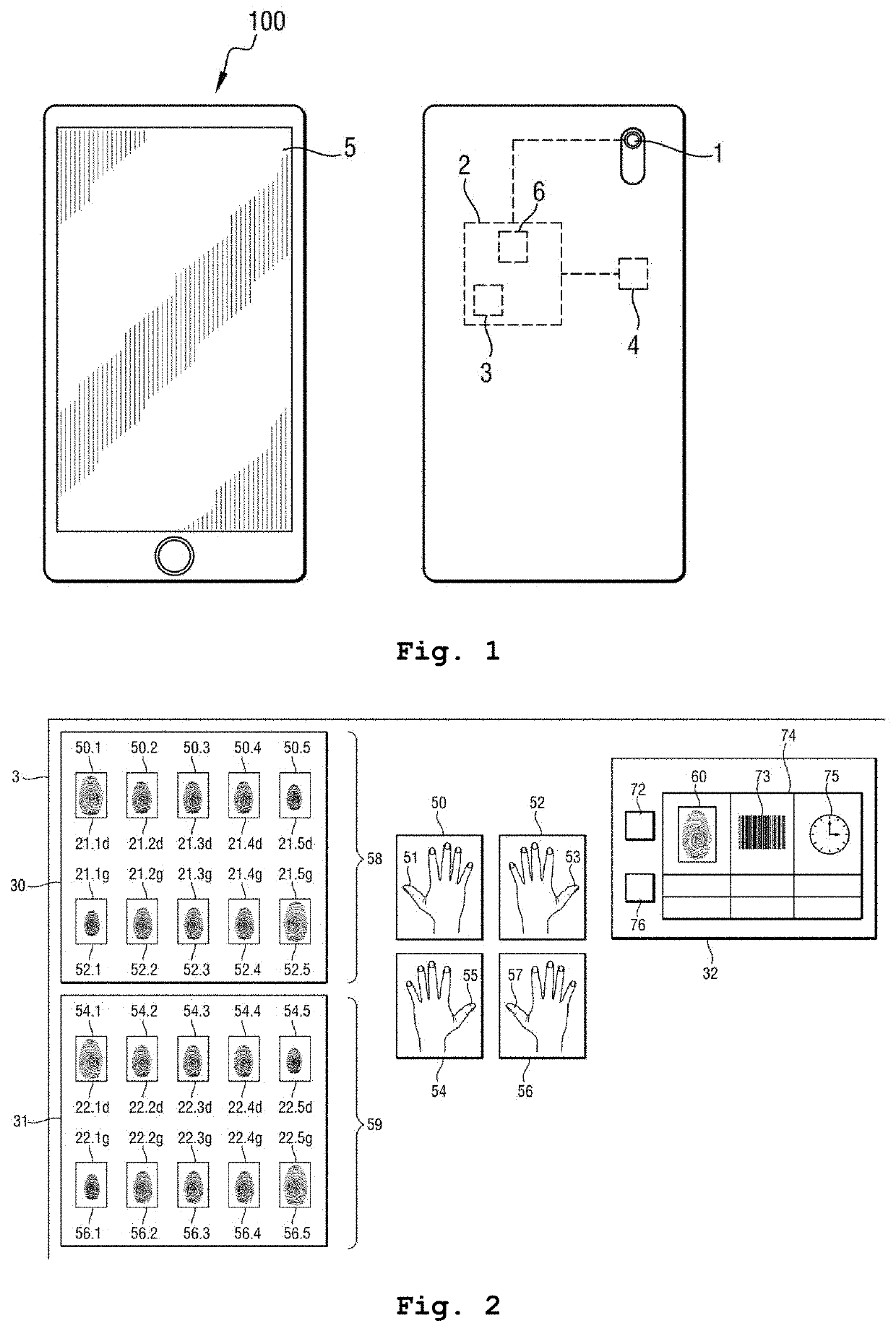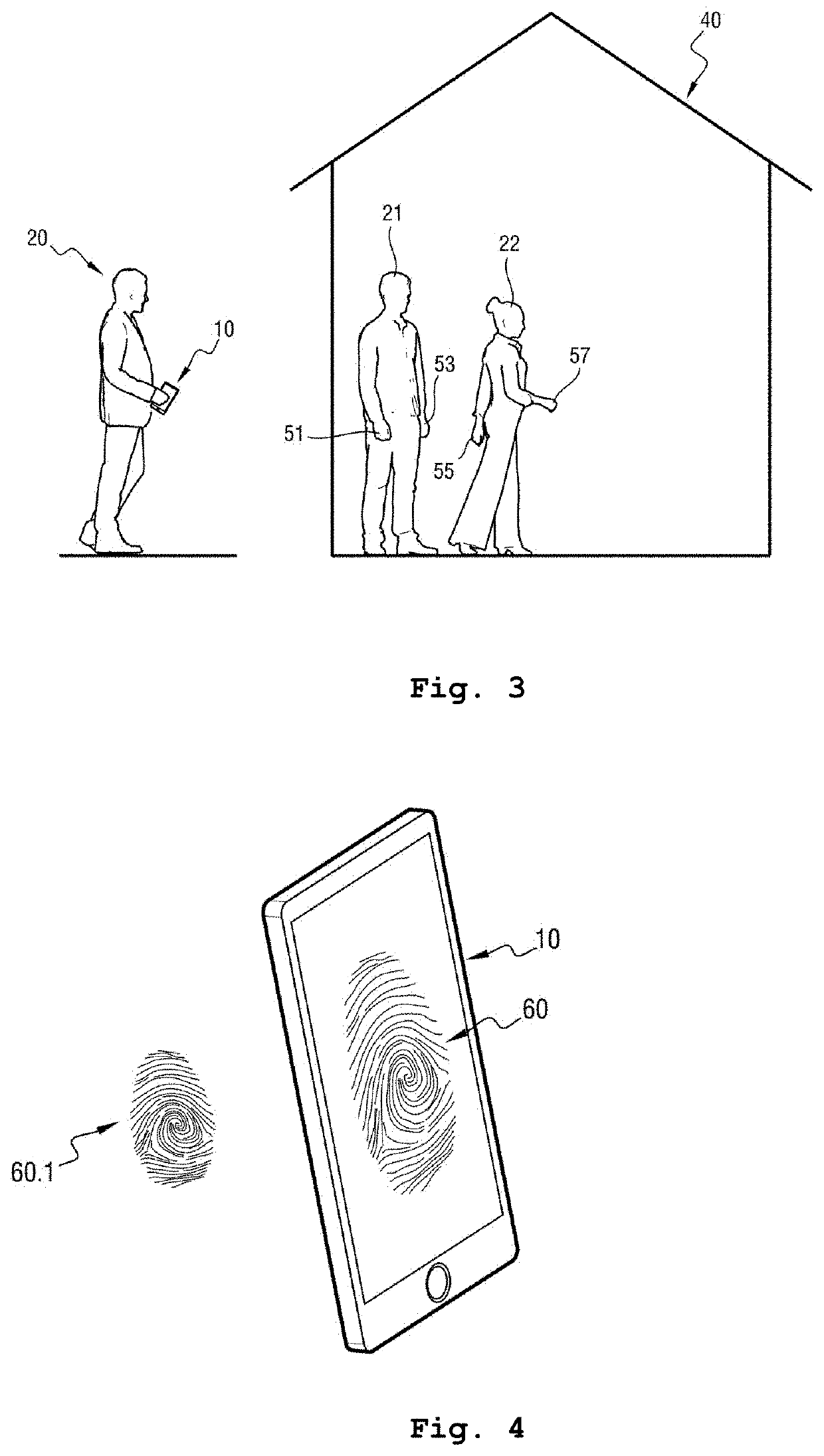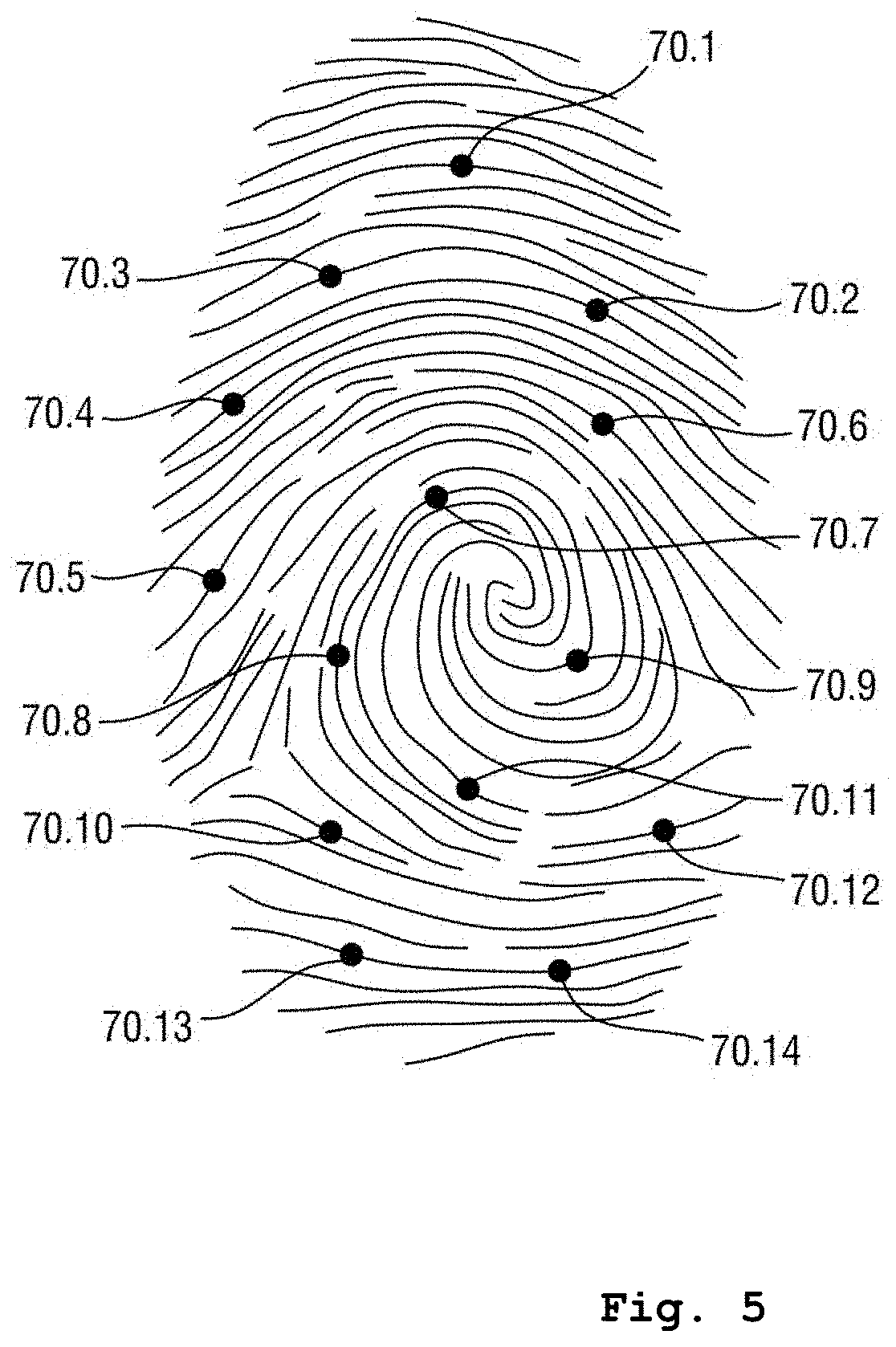Method of collecting biological material and a terminal for performing the method
a biological material and terminal technology, applied in the field of collecting biological samples, can solve the problems of inability to perform dna analysis, waste of resources, and high cost of dna analysis, so as to reduce the number of samples and the number of analyses, the effect of lowering the overall cost price of taking samples and performing more quickly
- Summary
- Abstract
- Description
- Claims
- Application Information
AI Technical Summary
Benefits of technology
Problems solved by technology
Method used
Image
Examples
Embodiment Construction
[0030]With reference to FIGS. 1 and 2, the mobile terminal of invention, given overall reference 10, is a mobile telephone of the smartphone type. The terminal 10 includes an optical sensor 1 of the charge-coupled device (CCD) type that is connected to a microprocessor 2 connected to a memory 3. The terminal 10 also includes a buzzer 4 and a touchscreen 5 that are connected to the microprocessor 2. The memory 3 includes an operating system program for the terminal 10 and also a biometric recognition program, both of which can be executed by the microprocessor 2. The biometric recognition program includes instructions arranged to extract biometric characteristics (commonly referred to as “minutiae”) from images of dermatoglyphs and to calculate a similarity score by comparing the biometric characteristics with one another. For this purpose, the biometric recognition program performs a conventional, so-called “matching”, algorithm 6.
[0031]The memory 3 includes a first memory location3...
PUM
 Login to View More
Login to View More Abstract
Description
Claims
Application Information
 Login to View More
Login to View More - R&D
- Intellectual Property
- Life Sciences
- Materials
- Tech Scout
- Unparalleled Data Quality
- Higher Quality Content
- 60% Fewer Hallucinations
Browse by: Latest US Patents, China's latest patents, Technical Efficacy Thesaurus, Application Domain, Technology Topic, Popular Technical Reports.
© 2025 PatSnap. All rights reserved.Legal|Privacy policy|Modern Slavery Act Transparency Statement|Sitemap|About US| Contact US: help@patsnap.com



